Humans have explored and discovered almost all areas of land, but the ground on which we stand is only a tiny percent of the world. The ocean accounts for over 95% of the earth’s living space, and 80% of this vast realm remains unexplored, untouched.
How do we know what’s on the bottom of the ocean? The truth is, we don’t. Scientists believe that up to 10 million ocean species are undiscovered. But the ones that have been recently unearthed in the deepest, darkest trenches of the world prove to be quite remarkable.
Discover the deepest part of the earth, including what lives at the bottom of the ocean and the creepiest creatures in the deep sea.
What Are the Ocean Zones?
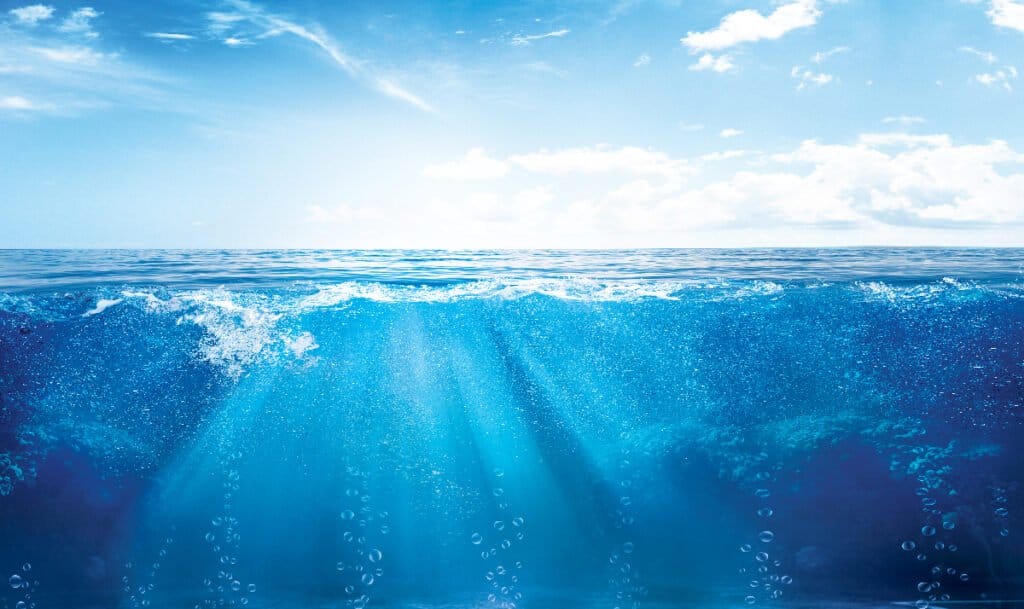
The ocean is divided into zones: sunlight, twilight, midnight, abyssal, and hadal.
©PHOTO JUNCTION/Shutterstock.com
To better understand and research this underwater dominion, scientists divide the ocean into zones: sunlight, twilight, midnight, abyssal, and hadal. Sunlight is the zone nearest the surface, while hadal is the deepest part of the ocean. Different creatures live in different zones, and most of the ocean’s space is in places untouched by humans.
Sunlight Zone
The epipelagic zone, or sunlight zone, starts at the surface and extends down over 600 feet. This zone is called the sunlight zone because enough sun rays penetrate the water for photosynthesis to occur. The sunlight zone is home to various marine species like sharks, jellyfish, and sea turtles. This area of the sea is abundant with plant and animal life.
Twilight Zone
If you journey past 650 feet, you enter the mesopelagic zone, commonly referred to as the twilight zone. This ocean space has very little light and increases to 3,280 feet (over half a mile below the surface). Photosynthesis does not occur in this zone, so animals feed off falling food particles or prey on victims in the sunlight zone. Animals in the twilight zone include lantern fish, viperfish, and mid-water jellyfish.
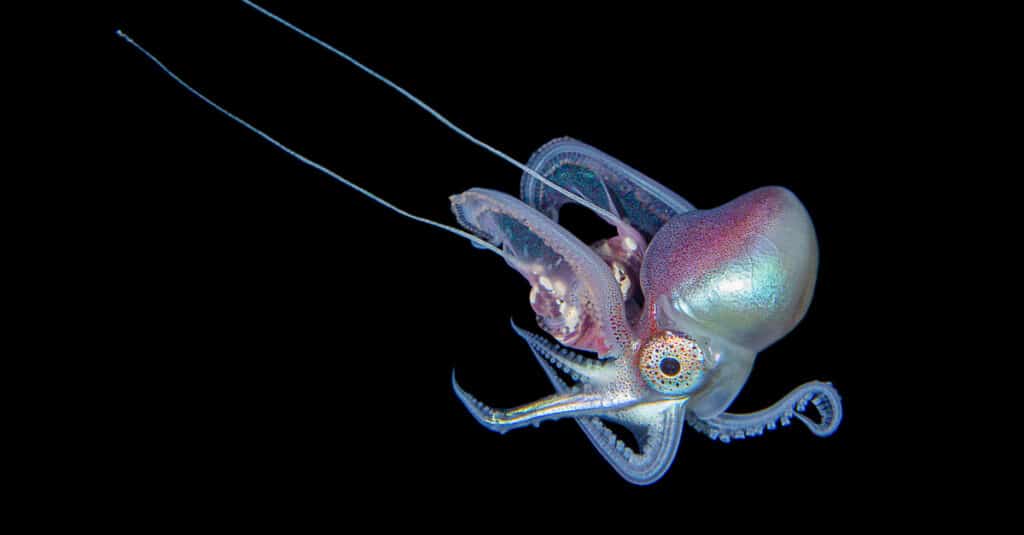
Creatures like octopus and eels live in the midnight zone, 13,000 feet below the surface.
©Sam Robertshaw/Shutterstock.com
Midnight Zone
The bathypelagic zone, or the midnight zone, is from 3,200 feet to over 13,000 feet. Sunlight does not reach this zone, and the average temperature is 39° Fahrenheit. This cold, dark ocean area is home to creatures like anglerfish, vampire fish, octopuses, and eels.
Abyssal Zone
The abyssopelagic, or abyssal zone, starts at 13,000 feet and extends over 19,000 feet (3.7 miles below the surface), and ends at the ocean floor. This zone covers 83% of the ocean and 60% of the earth’s surface. With little oxygen, no light, frigid temperatures, and extreme pressure, it’s a wonder there is still life in this part of the world. Creatures that inhabit the abyssal zone include chemosynthetic bacteria, worms, small fish, and certain shark species.
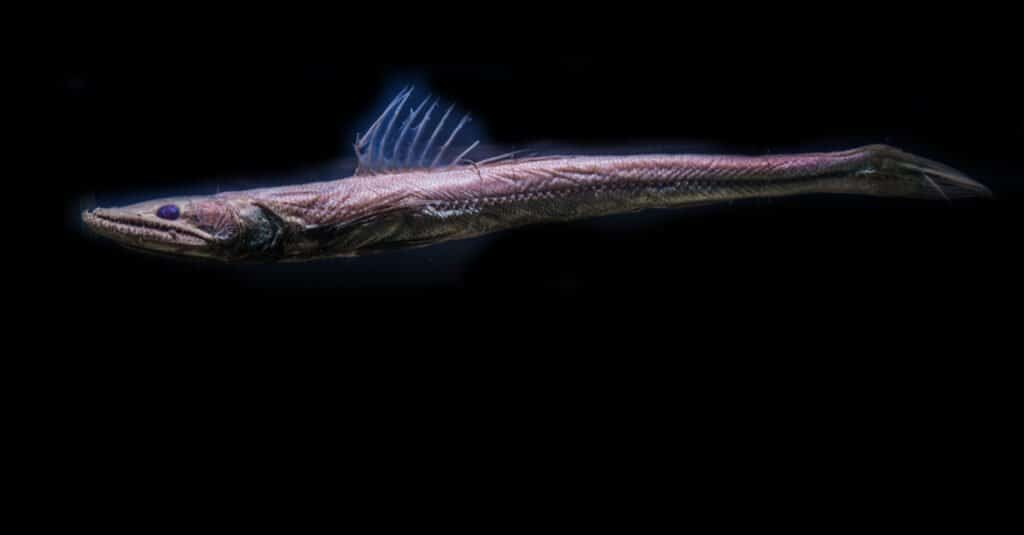
Small fish, worms, and certain shark species live in the abyssal zone three miles below the surface.
©superjoseph/Shutterstock.com
Hadal Zone
The Hadalpelagic, or hadal zone, is the deepest part of the ocean and consists of trenches on the ocean floor. The word hadal translates to Hades, the ancient Greek god of the underworld. This zone is not continuous but contains 13 troughs and 33 trenches (both depressions on the sea floor). The average ocean trench is 9,000 to 13,000 feet deep. However, there are at least five trenches deeper than 32,000 feet (over six miles)!
How Deep Is the Ocean?
The ocean’s average depth is 12,100 feet (over two miles). However, the last measurement was in 2010, when oceanographers had only mapped 10% of the ocean floor. So, the depth is only an estimate.
That measurement was for the average depth, though, and does not reflect the deepest parts of the ocean, which are much lower.
What Is the Mariana Trench?
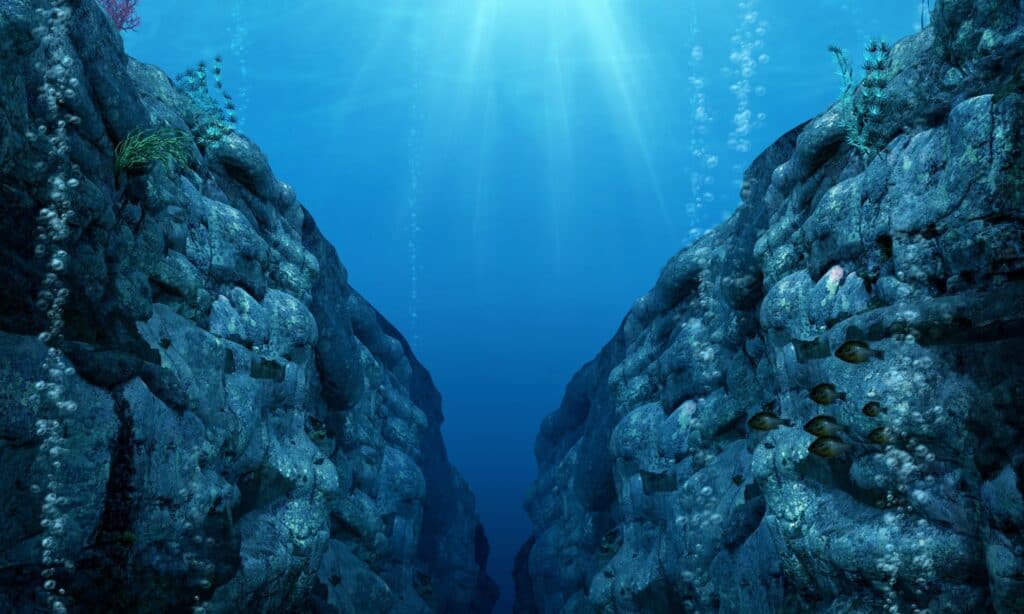
The Mariana Trench is the deepest spot in the ocean.
©iStock.com/ratpack223
The Mariana Trench is the deepest oceanic trench in the world and is more than seven miles below the surface of the Pacific Ocean. At the southern end of the Mariana Trench lies the Challenger Deep, the deepest part of the ocean known to humankind. The deepest spot in the trench is 35,876 feet, and the Mariana Trench itself is 1,580 miles in length, more than five times the length of the Grand Canyon.
What Lives at the Bottom of the Ocean?
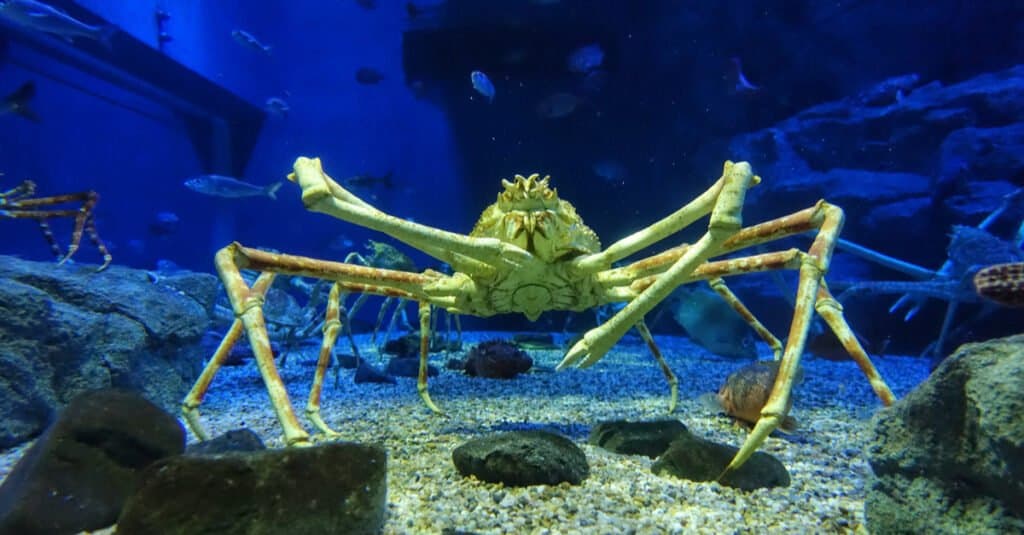
Strange creatures like sea spiders, colossal squids, and tube worms live at the bottom of the ocean.
©LELACHANOK/Shutterstock.com
Sea spiders, colossal squids, tube worms, and cookie-cutter sharks are some of the creatures that live at the bottom of the ocean. Animals that live at this depth have had to evolve to withstand intense pressure (600 times more than what is at sea level). There are even sea creatures that scientists have yet to identify.
There are no plants at the bottom of the ocean. Plants need oxygen and sunlight to grow, and neither are available from the midnightl zone on down. Scientists found a snailfish living 27,000 feet below sea level, the deepest living fish ever discovered.
Here is a list of creatures that live at the bottom of the ocean:
- Tripod fish
- Rattail fish
- Sea cucumbers
- Octopuses
- Snailfish
- Zombie worms
- Dragonfish
- Goblin shark
- Pelican eel
- Anglerfish
- Hatchetfish
- Frilled shark
- Squid
- Sponges
- Comb jellies
- Pink see-through fantasia
- Fangtooth fish.
What Are the Scariest Creatures in the Deep Sea?
Blob Sculpin
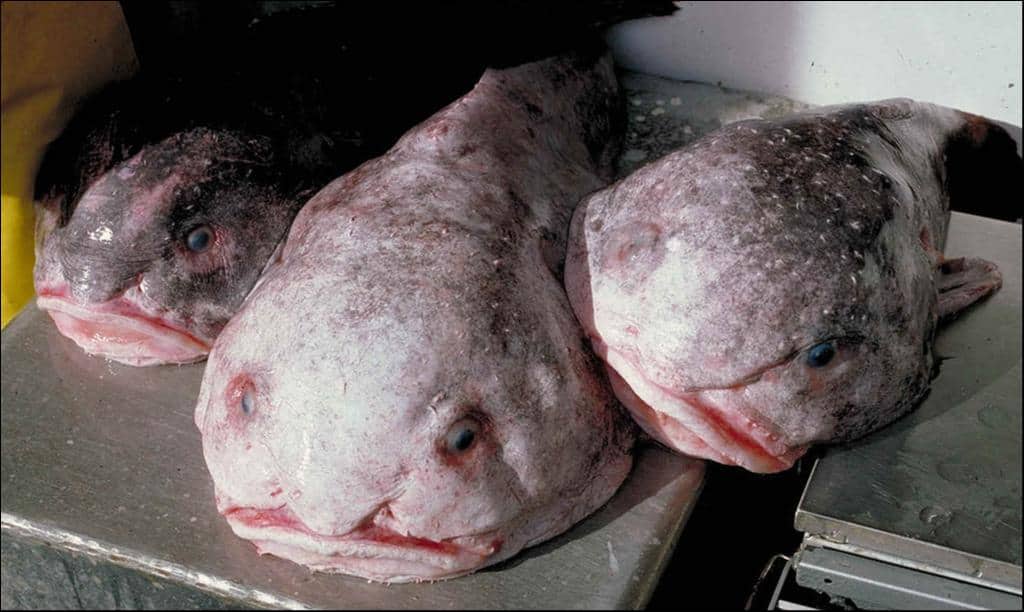
Blobfish
can grow to more than 2 feet in length and resemble a ghoul more than they do a fish.
©lacking author information / public domain – License
This squishy ghoul-like creature lives in the deep sea off the Pacific Coast. These blob fish may be difficult to look at, but they are harmless to humans. They feed on crustaceans and mollusks and can grow to more than two feet in length.
Goblin Shark
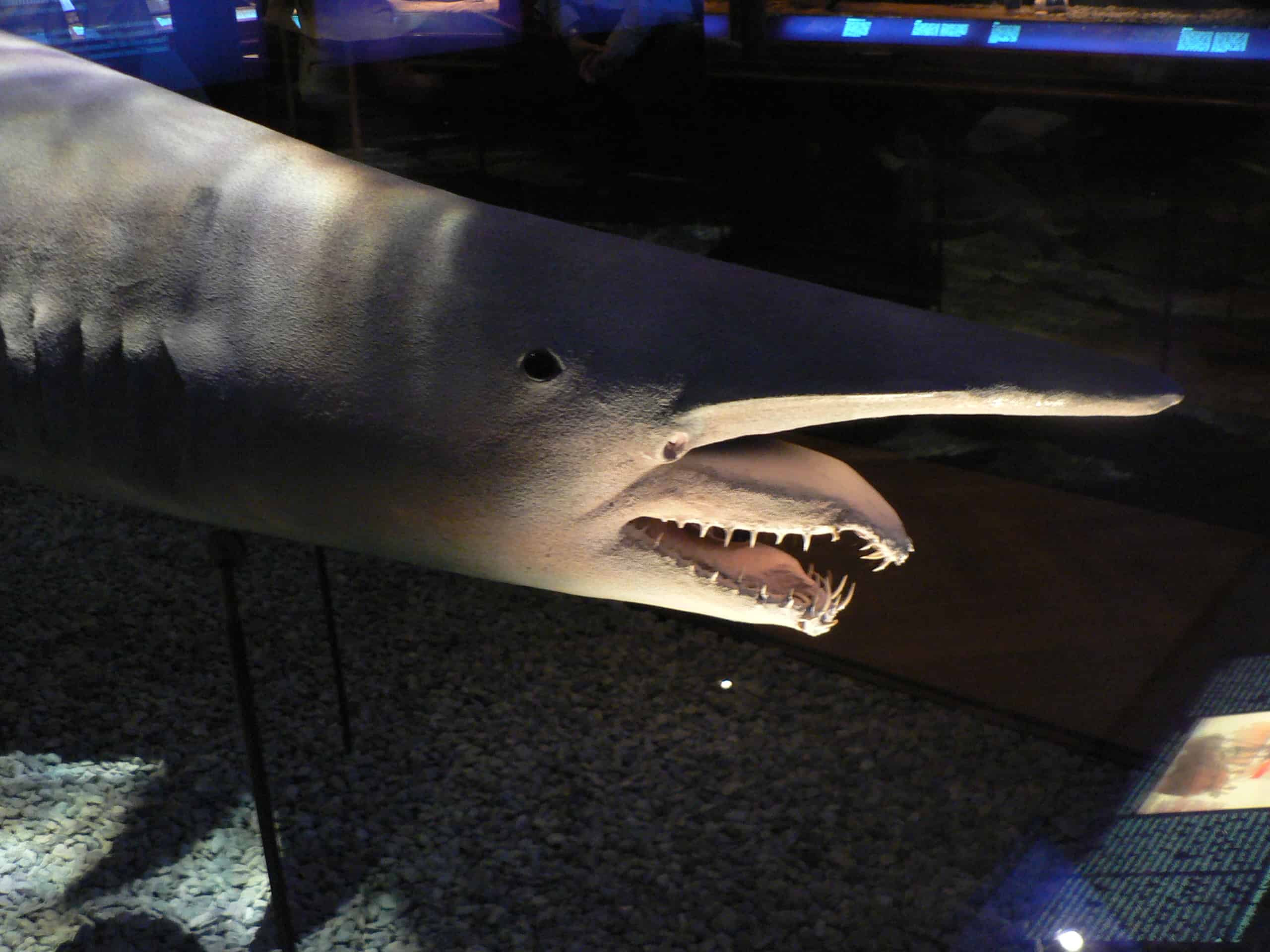
The goblin shark is a descendent of a 125-million-year-old shark family.
©Peter Halasz / CC BY-SA 3.0 – License
When you think of the pitch-black ocean along the sea floor, you think of terrifying sea creatures. The goblin shark happens to fit that description. It is more reminiscent of a dinosaur than anything you would expect to find in modern times. It has long, jagged teeth that protrude from its mouth, small beady eyes, and an impressively long snout. Goblin sharks are direct descendants of pre-historic sharks (125 million years ago) and can grow up to 20 feet.
Proboscis Worm
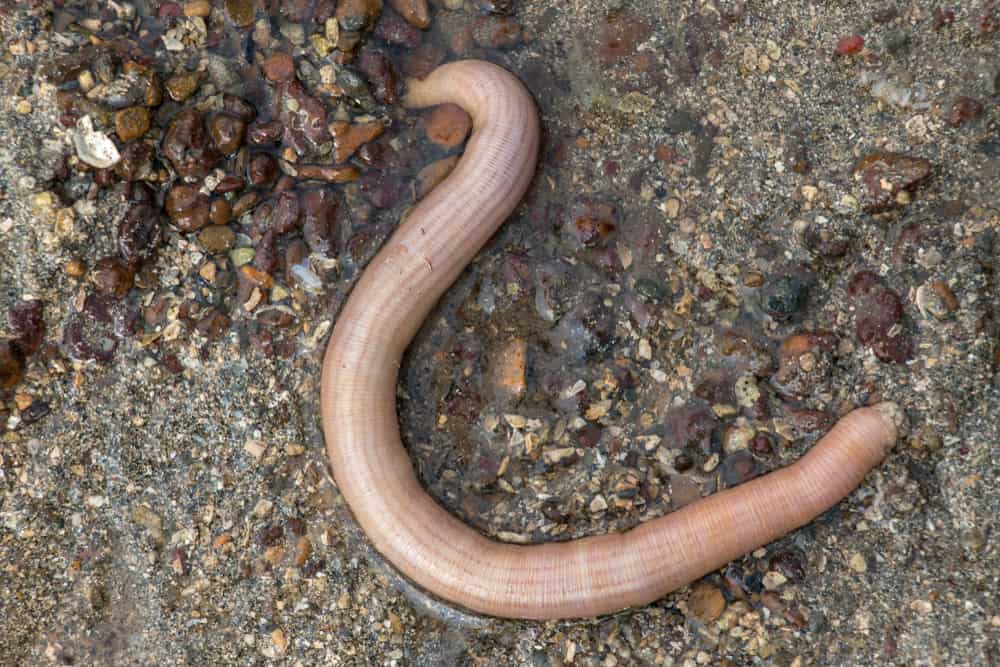
Nemertea is a phylum of invertebrate animals also known as ribbon worms or proboscis worms.
©Rattiya Thongdumhyu/Shutterstock.com
Is it an alien or a sea creature? These translucent worms are typically around a few feet, but some can grow up to 100 feet! They also shoot a web-like structure called a proboscis out of their mouths. It helps them entangle their prey or deter predators. The proboscis worm scavenges for food on the sea floor and has very few predators.
Giant Isopods
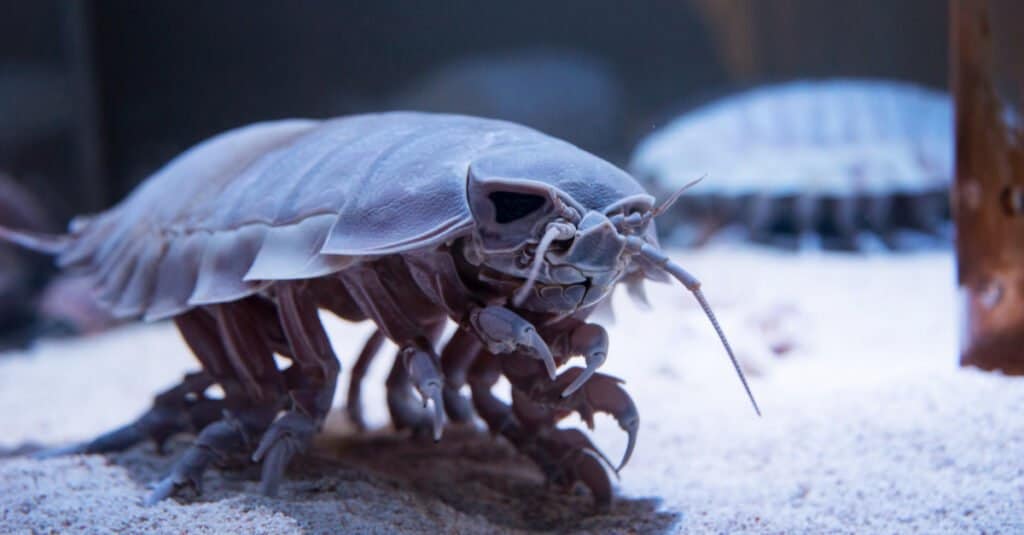
These giant sea creatures resemble pill bugs, and they eat whale carcasses.
©kikujungboy CC/Shutterstock.com
Giant cockroaches are what nightmares and horror movies are made of, but what if they actually existed? While not technically a cockroach, these critters definitely give off strong roach-vibes. However, giant isopods more closely resemble pill bugs or woodlouse. They crawl along the cold sea floor, looking to devour whale carcasses and dead squid that float to the bottom.
Frilled Shark
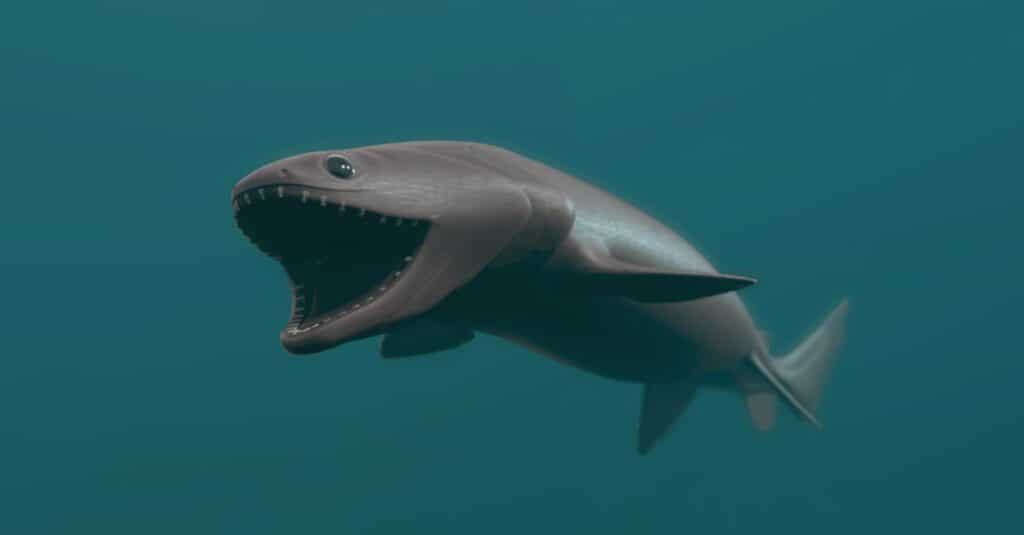
The frilled shark swallows its prey whole and will even eat other sharks!
©iStock.com/3dsam79
The frilled shark has 300 rows of needle-like teeth and an eel-shaped body. It has a pre-historic lineage and is known for hunting for its prey near the surface, which it swallows whole with its long, flexible jaws. The frilled shark’s favorite food is squid, but it will also eat other sharks.
Why Hasn’t More of the Ocean Been Explored?
There are three main reasons that humans have not explored the depths of the ocean: visibility, temperature, and pressure. As mentioned, there is no sunlight after about 3,200 feet, so the darkness is a problem. Exploration of the deeper parts of the ocean would have to be done with artificial light, which is limited in scope.
The temperature, starting in the midnight zone, is only 39 degrees Fahrenheit. At 7,200 feet, it is only 35 degrees Fahrenheit. The further down you go, the colder it gets, and the higher the pressure gets.
At sea level, you are subject to a water pressure of 14.6 pounds. This pressure increases with water depth causing the air in the body to be compressed as the waters push against the body. Diving beyond about 60 meters or 200 feet without proper equipment and gas mixes can lead to serious health issues, like collapsed lungs, nitrogen narcosis, and oxygen toxicity.
In other words, without specialized underwater sea vessels, humans cannot survive the depths of the ocean. Such vessels are expensive and still being tested for safety. More people have been on the moon than in the ocean’s depths: only three people have spent around three hours exploring Challenger Deep, the deepest known point of Earth’s seabed.
The photo featured at the top of this post is © Rui Palma/Shutterstock.com
Thank you for reading! Have some feedback for us? Contact the AZ Animals editorial team.






